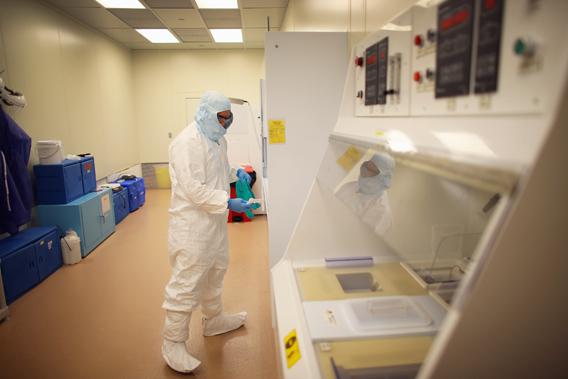Good news, Americans—you’re about to get richer.
Well, not you, personally. But you in your capacity as a citizen of the mightiest economic empire the world has ever known. The Commerce Department’s Bureau of Economic Analysis is prepared to announce that America’s gross domestic product is 3 percent larger than previously estimated—about $1,500 extra worth of goods and services per person. What did we do to get so lucky?
Nothing. We did nothing. But we’re getting richer anyway. As Robin Harding first reported over the weekend, we’re getting richer on paper because the BEA is changing how it calculates the national income and product accounts (NIPA) to bring it into line with recommendations promulgated by the United Nations back in 2008. The main idea is that in an economy that increasingly depends on the production of intangible goods, we need to recognize that the production of ideas is an important form of investment. So in the future, the BEA is going to count a company’s research and development as a form of investment just like the purchase of a new office building. And the creation of a durable work of art—a film, a season of television—that can be sold year after year will, likewise, be treated as a capital investment. These new calculations will also be applied retroactively, and thus, like magic, we’ll all be richer. Or, at a minimum, learn that we’ve been richer all along.
And good for us. The true moral of the story, however, is that seemingly solid economic data is in many ways more art than science.
Government statisticians draw a distinction between money a company spends as the cost of doing business and money a company spends on investing for the future. When a moving company buys a new truck, that’s an investment. You expect the truck to last for years and generate an ongoing stream of income. The truck purchase is part of GDP. Each year the truck depreciates in value, with the depreciation subtracting from GDP as what’s known as “consumption of fixed capital.” When a moving company buys gasoline to fuel the truck, that’s just the cost of doing business. The expense incurred is subtracted from the company’s income when calculating how profitable it was in any given year.
Right now we treat filming a season of Game of Thrones or having researchers work on a new pharmaceutical as being similar to filling up the truck’s gas tank. The new method is to treat them as similar to buying the truck.
Conceptually, the new way is clearly correct. Game of Thrones is to HBO as a truck is to a moving company: part of its stock of capital. Accounting for artistic originals in that way will add about half a percentage point to the size of America’s overall economy. Doing the same for research and development spending will add slightly more than two percentage points. And here, too, the new system is more sound in theory. A drug company is going to own plenty of physical capital goods, but its most important investments are the ones it makes in researching new products.
The new method makes sense in theory, but it will be tricky in practice. When calculating the value of an investment in a truck, we rely on the market price of trucks. When calculating the value of an investment in a new building, we rely on the market price of the land, labor, and material it takes to construct it. But research and development and artistic originals aren’t commodities that can be priced like this. So the Commerce Department will be forced to value investments simply in terms of the amount of money that was spent. There’s something clearly perverse about this. There’s no guarantee that an expensive movie is more valuable than a cheap one, and there’s certainly no reason to believe the amount of money spent on a research program is a proper assessment of its value. In effect this will leave us with the conclusion that a wasteful research undertaking adds more to the economy than a thrifty and effective one.
The difficulty of properly counting these intangible investments is one reason countries generally haven’t counted them as capital goods. But in an increasingly digital, ideas-driven economy, intangibles really are important: The 3 percent change in measured GDP isn’t a game changer, but it’s more than a rounding error. Simply ignoring intangibles gives a misleading picture of the state of the economy, and the new system is a step forward. But keep this controversy in mind the next time you hear people offering strong claims that hinge on the specifics of macroeconomic data. An economy dominated by the output of bushels of wheat and tons of steel is amenable to counting in a way that a modern service economy simply isn’t. The concept of economic output as something that can be uncontroversially measured has always been an approximation, but it’s one that’s increasingly obsolete as more and more of us spend our days producing and consuming intangible goods.
